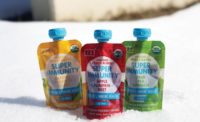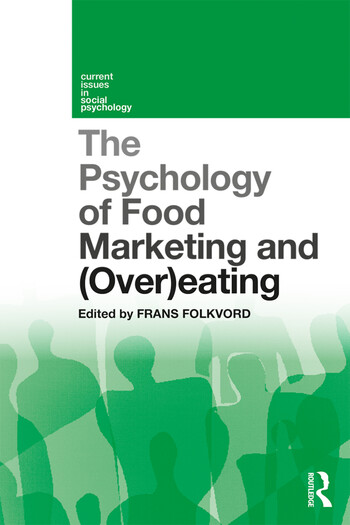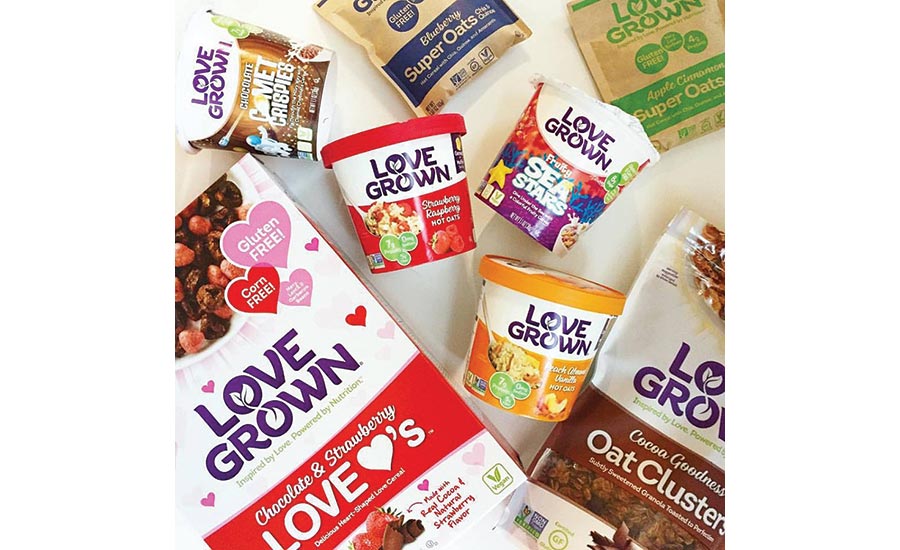Targeting Millennial Food & Beverage Consumers
When focusing on age-driven appetites, attitudes—emphasize story, snacking, taste and texture














Targeting a new food or drink to Millennial consumers? Join the club. The so-called Millennial generation is well established and widely utilized as a marketing term. Then again, perhaps the large number of consumers now encompassed within this grouping—actually reduces its usefulness.
The generational descriptor probably was first coined in the mid- to late-1980s to follow Generation X and describe the young people reaching adulthood in the early 21st century; generally the children of the so-called Baby Boomers. Back in late 2014, Innova Market Insights highlighted “Marketing to Millennials” as one of its key trends for 2015 and this trend certainly continued to grow since then.
Observers now estimate that Millennials now account for more than one-third of global consumers, including more than one-quarter of the US population. With an estimated 75 million to 95 million people, Millennials now outnumber Baby Boomers. This clearly offers a huge target market for companies. Again, however, a lack of clear definition and the range of consumers involved also set considerable challenges to successfully engage this demographic.
When it comes to eating and drinking habits, Innova Market Insights knows Millennial consumers tend to have less formal eating patterns than their predecessors. Often, they focus on snacks rather than meals and often eschew traditional breakfast, lunch and dinner choices for new-style products and eating occasions.
Millennials also tend to focus on heightened eating experiences, with interest in unusual and novel options, often with intense flavors and extreme textures. These consumers now have technology giving them more information and allowing them to make more informed choices. With that, they want more facts about their food and the brands they favor—what ingredients are included, how the products are made and even how eco-friendly their packaging is. Brand identity also is very important.
First Things First: Breakfast
Millennial consumers are big proponents of eating on the go and require portability as a key product consideration. At a time when more breakfasts are consumed outside the home, it’s understandable that manufacturers are targeting this eating occasion and their resulting new products are radically changing the face of the category. This was initially led largely by breakfast cereal companies looking to jumpstart a relatively static market. More recently however, a wider range of companies are developing new portable items with breakfast appeal.
Breakfast cereal makers initially focused on packaging to provide more convenient formats—particularly single-serve lines with greater portability. These could be easily transported for consumption in convenient locations, such as workplaces. Options in single-serve pouches or bowls have become much more popular in recent years, with oatmeal entries achieving the most success to date. Launches have included instant products that just need the addition of milk or water prior to heating and microwaving. There also are more premium ready-to-heat products sold through refrigerated displays.
Established brands such as Quaker’s Instant Oatmeal Cups and Real Medleys are being joined by newer entrants. These include Love Grown Blueberry Banana Walnut Hot Oats (Love Grown Foods LLC, Denver), and Gluten Free Instant Oatmeal with Brown Sugar and Flax (Glutenfreeda Foods Inc., Burlington, Wash.). Retailers also are getting into the act. Trader Joe’s, for example, extended its single-serve oatmeal line with varieties such as Strawberry Raspberry and Tart Cherry Chia & Pumpkinseed.
Breakfast cereal companies play a significant role in driving the cereal and snack bar market. These manufacturers recognize potential for on-the-go breakfast replacements, as well as anytime meal replacements and snacks. Not surprisingly, these processors use their existing ingredients, recipes and brands. Interestingly, there’s are still more manufacturers, such as Mondelez, targeting the breakfast meal opportunity. In fact, Mondelez and its Belvita brand have helped create and re-energize the worldwide market for breakfast biscuits.
Drink Up!
On-the-go breakfast options also include drinks, led by dairy-based lines with cereals and, more recently, protein beverages. Most of these combine the key elements of milk and cereals to create a fun, engaging and convenient way of taking on a breakfast snack.
Liquid breakfasts have been on the market for a number of years, with products featuring ingredients such as cereals, milk or yogurt, juices, and fruit. However, these products have been relatively slow to gain sales. Australia was one of the few countries seeing some success in this area, and even there the market was largely confined to one product, Sanitarium’s Up & Go, launched back in 1998.
In the US, Kellogg competes in the liquid breakfast market with its Kellogg’s To Go breakfast shakes line, which has been on the market since 2013. These drinks compete with an increasing range of breakfast options, particularly protein drinks, which may or may not have a specific breakfast positioning. Kellogg’s Special K breakfast cereal brand also offers protein shakes, which have a weight management positioning (while they also target on-the-go breakfast, meal replacement and anytime snacks categories).
There are still more new niches in the dairy case. Consider Lifeway Foods, a Morton Grove, Ill., company that offers three new kefir-and-oats breakfast products. Varieties include Vanilla Plum, Cinnamon Apple and Blueberry Maple varieties. They are marketed as a complete breakfast on-the-go or an anytime snack. Meanwhile, others make a virtue of a smoother texture. In 2015, Borden Dairy, Dallas, introduced Lala (drinkable) Yogurt Smoothies, marketed as “favorite breakfasts without the crunch,” with options such as Pecan Cereal, Strawberry Banana and Vanilla Almond. Last year saw Borden come back with LALA Healthies Curb Yogurt Smoothies, which combine grains and proteins to deliver 10g of protein, 8g of whole grains plus a healthy amount of fiber in every drink. Three varieties are Wild Strawberry, Toasted Pecan and Orange Pineapple.
More Information, Options
Social media helps Millennials (and, indeed consumers in general) interact more directly with their favorite brands. On the flip side, Innova Market Insights finds manufacturers using social media to more creatively engage consumers in product development.
PepsiCo already has become a leader in this area. It sponsors competitions whereby consumers submit their favorite new flavors, which are subsequently put to a vote for a prize of either a limited or permanent market launch. This started with PepsiCo’s Walker’s brand in the UK in 2008, with consumers submitting new crisps flavors—and then voting on six finalists. The success of this initiative included greater consumer engagement with the brand. Next, PepsiCo took the concept to the US with the first “Do Us A Flavor” competition in 2012 for the Lay’s potato chip brand.
In 2016, the format changed to a “Flavor Swap,” whereby the brand, for the first time in its history, asked US consumers to help decide which flavors would stay and which would go, with four American classics competing against four all-new Lay’s flavors. This was designed to reflect the country’s changing flavor palette. Lay’s fans emphatically expressed a preference for the “tried and true” flavors of Lay’s Flamin’ Hot, Lay’s Cheddar & Sour Cream, Lay’s Honey Barbecue and Lay’s Kettle Cooked Sea Salt & Cracked Pepper. Other options included the all-new Lay’s Fiery Roasted Habanero, Lay’s Smoked Gouda & Chive, Lay’s Korean Barbecue and Lay’s Kettle Cooked Olive Oil & Herbs. The company is now bringing back “Do Us a Flavor” for 2017.
PepsiCo’s Quaker Oats business likewise embraced the concept with a “Bring Your Best Bowl” contest. It challenged people to submit ideas for the next Quaker oatmeal flavor –using just two to five ingredients. Last fall, three finalists were selected from more than half a million submissions, and the limited-time flavors were made available at stores nationwide, giving America the chance to sample and vote for their favorite, and Apple Cheddar Rosemary, an idea from Karen D. of Boston, came out on top.
Instant Apple Cheddar Rosemary oatmeal began rolling out to grocery store shelves this spring. Two runner-up finalists—who submitted Vanilla Chai and Lemmon Ricotta Pancake recipes—each received $5,000 for their unique and creative inspirations.
Juices, Coffees
Millennials’ interest in how their foods are produced has led to growing interest in minimally processed products. In turn, this has led to growing availability of cold pressed juices and smoothies, with many using high-pressure processing (HPP) techniques for a higher-quality premium style product with a longer shelf life.
Innova Market Insights data show that US launches of not-from-concentrate 100% juice and juice and juice drinks rose from just over 10% of the total market in 2011 to more than 25% of the market in 2016. Many of these were marketed as “cold-pressed” and come in a wide range of new, on-trend flavors. New varieties feature fruit and vegetable fusions, as well as ingredients such as greens, ancient grains and spices to add a touch of the exotic to a healthy, clean label image.
Product activity has continued at a brisk pace in 2016 and 2017. Interesting new launches include Cold Pressed Aloe and Berry Lemonades from Juice Served Here, Los Angeles; five new “Green Ade” varieties from Daily Greens LLC, Austin, Tex.; and new organic cold pressed vegetable juice blends from Forager Project, San Francisco. Hain Blueprint Inc., Lake Success, N.Y., also offers organic cold pressed juices that blend multiple vegetable and fruit juices. These blends carry such exotic and intriguing names as “Grass Monkey,” “Beet Blast,” “Kale It Up,” “Lime Kick” and “Apple Ginger Go.” Many companies add to product appeal with organic, non-GMO and vegan-friendly claims.
Cold-brewed coffee also is making a significant impression in the beverages market—thanks in no small part to its appeal to Millennial consumers. Again, these consumers favor the portability and versatility of ready-to-drink coffees. The cold-brewing process offers minimal processing, a more intense flavor and a new fusion of hot and cold drinks. The ready-to-drink coffee market in the US is continuing to grow and taking a rising share in coffee consumption overall. It also reached a share of 5% of overall US soft drinks launches recorded by Innova Market Insights in 2016.
Cold brew coffees have seen rising levels of interest, and in 2016 launches featuring “brew” or “cold brew” in the product name accounted for nearly 80% of the total. Activity has continued apace in 2017, with launches in bottles, cans and cartons. There’s a wide range of flavors including traditional iced coffee favorites such as Vanilla and Caramel. Activity in private label brands, such as Trader Joe’s canned cold brew coffees, also illustrates market development. Kraft’s Gevalia brand also has been used for the launch of a cold brew coffee concentrate in House Blend, Vanilla and Caramel options.
Developments in the market in the latter part of 2016 included the rise in nitrogen-infused options, pioneered by Black Medicine with its Pressure Brewed options, but also appearing in other products, such as Califia Farms Nitro Cold Brew, which is also dairy-free.
One of the market pioneers, Chameleon Cold Brew, Austin, Texas, is reported to be the leading brand with its black, cold-brew coffee concentrate. Interestingly enough, Chameleon partnered with another well-known Texas name: The Spoetzl Brewery, Shiner, Texas, to develop a co-branded Shiner Cold Brew Coffee Ale.
Of course, the cold brew trend is even edging outside the beverages market. Last year brought another co-branded effort—this time, on the super premium ice cream shelf. Tillamook Creamery released Tillamook Stumptown Cold Brew Coffee super-premium ice cream in partnership with Stumptown Coffee Roasters, Portland.
Although targeting the Millennial consumer necessitates some generalizations, manufacturers need to remember that perceived individualism and personalization also are important factors. In addition, it is clear that many of the trends that influence Millennials also are influencing other generations and society as a whole.
Millennials’ love of innovation also is a key factor that aids product development and marketing and this has been key in the trend toward blurring boundaries between different product types and eating occasions. This trend was encapsulated in “Fuzzy Borders,” one of Innova Market Insights’ key trends identified for 2017, whereby much innovation is focused on fusion or hybrid products sitting outside traditional product definitions and combining elements of a number of different categories.
Originally appeared in the June, 2017 issue of Prepared Foods as Age-Driven Appetites, Attitudes.
Looking for a reprint of this article?
From high-res PDFs to custom plaques, order your copy today!
















